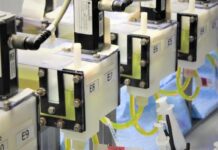
ANSTO’s OPAL multi-purpose research reactor at Lucas Heights has resumed operations after completing a planned months-long shutdown to facilitate critical maintenance and upgrades.
The shutdown, described as one of the most significant in the reactor’s history, allowed for essential improvements to the facility, ensuring its continued safe and efficient operation.
Among the key upgrades was the replacement of OPAL’s cold neutron source, a crucial three-meter-tall device situated next to the reactor core.
The device is essential for slowing down neutrons, enabling detailed atomic-level analysis of materials through scientific neutron beam instruments.
The shutdown also allowed for upgrades to OPAL’s First Reactor Protection System, a vital digital mechanism that automatically shuts down the reactor if critical parameters are exceeded.
The system serves as the first line of defence for the reactor’s safe operation, ANSTO said in a news release.
ANSTO engineers and technicians spent a decade planning and executing this project. They developed a full-size mock-up of the OPAL reactor to rehearse and train for the complex tasks involved.
This preparation was essential, as OPAL is Australia’s only nuclear reactor, responsible for producing neutrons vital for nuclear medicine and silicon irradiation, both critical for medical treatments and the global electronics industry.
David Vittorio, ANSTO’s general manager for the OPAL Reactor, underscored the importance of the upgrade.
“OPAL is one of the most advanced and reliable research reactors in the world, and its successful operation is key to ANSTO’s research and commercial activities,” he said.
“This planned shutdown was the largest maintenance and upgrade program OPAL has undertaken to date, and we are proud of the expertise and experience that allowed us to accomplish it.”
ANSTO also used the shutdown period to coordinate with overseas suppliers, ensuring the continued provision of nuclear medicine products while the reactor was offline.
Approximately 94 per cent of imported nuclear medicine products were delivered on time, ensuring patients across Australia continued to receive critical treatments.
Dr Jamie Schulz, director of ANSTO’s Australian Centre for Neutron Scattering (ACNS), highlighted the impact of the cold neutron source upgrade on research.
He stated that the new cold neutron source will enhance the performance of eight out of the centre’s 15 neutron beam instruments.
“The neutrons produced by OPAL support our unique facility and scientific instruments, allowing our researchers and industry partners to study the structure and dynamics of samples, such as molecules, polymers, proteins, and viruses,” Dr Schulz said.
Visit the ANSTO website for more information about the OPAL multi-purpose reactor and the Australian Centre for Neutron Scattering.




















